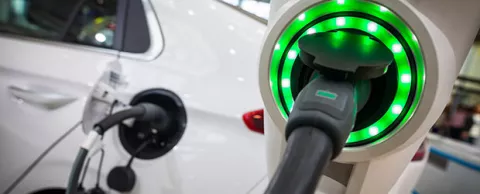
Electric vehicles are an area where we’ve seen exponential growth. There are now more than 2 million EVs on the road worldwide. That’s close to double the number the year before and 20 times the number five years earlier.
We typically talk about the value of EVs in terms of their reduced emissions. And that’s a critical benefit, especially as cities take more responsibility for combatting climate change. But they’re also capable of having an even bigger impact on your city: they can contribute to the stability of your power grid.
SAS, a Council Global Lead Partner, dives into this powerful benefit in more depth below — more fuel for building a business case to encourage EVs in your city. — Kevin Ebi
By Alyssa A. Farrell, SAS
Power producers around the world are adjusting to low carbon mandates. Increasingly, our thirst for power will be met by a combination of non-fossil fuel energy resources, including nuclear, hydro and renewable (solar, wind, biomass). As utility grid operators seek to manage the reliable delivery of power from resources that are intermittent, electric vehicles could play a key role.
Electric vehicles present unique opportunities to the energy industry. EV owners will consume more electrons than fuel-based cars, which is potential revenue growth. Customers will purchase more EVs in regions where charging infrastructure and smart payment services are available. New partners and business models will transform the provider landscape.
Data and analytics provide the insights to optimize how EVs will contribute to a sustainable energy ecosystem. In fact, the transportation sector now emits nearly as much carbon dioxide as power generation, so pressure will be on the EV value chain to grow in a sustainable manner.
Smart charging
When and where EVs are charged has a big impact on electricity demand and associated grid assets. High penetration of EVs in the residential market drastically increases the peak demand for electricity at the end of the day as owners return home from work or school and plug in EVs. At the same time, homeowners are adjusting thermostats in the house, cooking dinner and turning on the television. This combination adds stress to the local distribution system and often requires investment to repair or replace utility assets.
During peak demand, the percentage of sustainable energy in the total energy mix is usually the lowest. Therefore, EV owners may be offered lower rates to re-charge overnight. Price elasticity studies and load forecasts will help to design programs that achieve desired objectives. Smart charging systems will moderate the charge to minimize impact on the total system. Homeowners may also decide to combine EV charging with a rooftop solar panel and a small battery. With this system, they can generate electricity during the day, store it, then discharge it to the car when needed.
Storage
As our dependency on renewable energy grows, storage is required to balance supply and demand and ensure grid reliability. Current battery storage is expensive and inefficient. However, EVs can act as distributed batteries for storage. When EVs are connected to the grid, they may also serve as backup power, if the owner has agreed to that flexibility by accepting something of personal value (charging credits, discount on charging infrastructure, etc.).
IoT data identifies and locates connected EVs and analytics optimizes the fractional discharge to meet demand. To make this successful, EVs must be treated as a connected device, similar to other IoT assets, but with flexibility to provide services to multiple players in the sustainable energy ecosystem.
Low carbon fleets
Commercial EV fleets and buses present the greatest opportunity for both smart charging and storage because of their combined energy potential. Hydrogen fuel cells are also in evaluation for commercial trucking and other long-range applications. On-board sensors provide data about vehicle performance, fueling analytics that optimize pricing, charging schedules, and sustainable energy potential.
Analytics is required to efficiently integrate electric vehicles into a sustainable energy ecosystem. This opportunity will bring new partners together, including power utilities, vehicle distributors, charging infrastructure, municipalities, and consumers. As the market matures, there will be even more opportunity for IoT analytics for consumers and the power grid alike.
SAS and Intel recently collaborated with Navigant Research to study the business models and analytics required to optimize the benefits of electric vehicles. Please send me a message via LinkedIn if you would like a free copy of the report.
Alyssa Farrell leads industry marketing for the SAS Global Energy Practice. In this role, she focuses on the SAS solutions that help optimize our energy infrastructure by applying predictive analytics to complex data. Prior to joining SAS in 2004, Alyssa was a senior consultant in the Deloitte Public Sector practice. She earned her MBA degree with a concentration in Management Information Systems from the University of Arizona. She also holds a Bachelor of Arts degree with honors from Duke University. Follow her on Twitter and LinkedIn.



